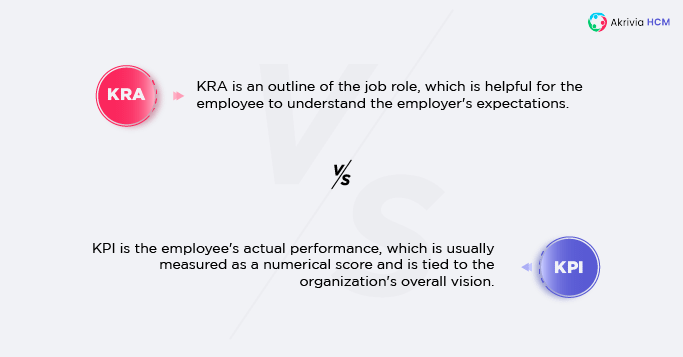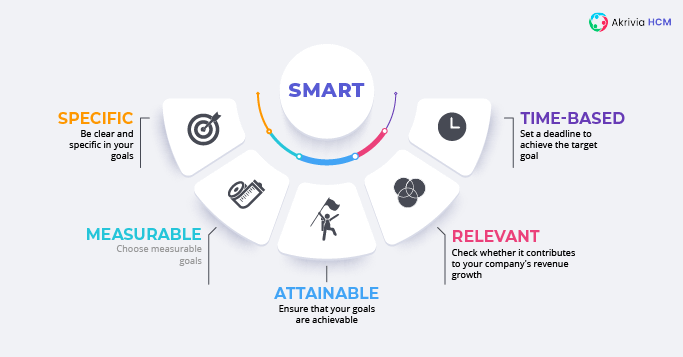Table of Contents
Key responsibility areas or KRA, define the expectations of the employer from a specific job role. It clarifies to the employee what is expected of their role at the company. Without KRAs, an employee may feel lost or demotivated to perform.
Key responsibility areas also play an important role in increased employee satisfaction and are used as an outline based on which an employee’s performance review can be done. It is usually well-defined and easy to measure for the employer. This helps the employee perform better by providing a ready reckoner about what is expected by the employer.
Is it possible to employ people in the team and expect them to work towards the set goals without clarity on the job role?
No. It would be a nightmare. People would usually fall short of meeting expectations, as they would not know what was expected of them. Working without clarity on the job requirements and employer expectations would not take any employee or the organization very far.
The job outline or the expectation from the employer helps start an employee’s journey with the correct mindset and clear expectations from the employer.
KRA plays a critical role in performance management as employees can work in a set framework. These are increasingly becoming a basic requirement in today’s workplace. Employees expect the employer to share clear KRAs, as it sets the outlines for their performance at the organization.
Defining clear key responsibility areas is important for both the employer and employee in many ways. Some key points on the importance of KRA in the workplace are as follows:
It must be considered essential to provide the proper structure to various job roles in an organization. Without KRAs, there would be a lot of duplication of effort, making the entire system less efficient. Key responsibility areas allow the employer to allocate responsibilities based on the strengths and skills of each employee. These are helpful in employee engagement and retention.
Well-defined key responsibility areas support the employees to bring growth to an organization. Without it, the employees would not be able to collaborate with a common goal to drive the revenue and profitability of the organization. KRAs not only provide structure to employee efforts but also contribute directly to the success and growth of the organization.
These are crucial for any organization because they make it easy to measure employee productivity. It is essential to have KRAs in place to enable seamless performance review.
KRAs are important for providing the right motivation to employees in the workplace. Without KRAs, an employee feels lost and quickly loses motivation to achieve company goals. It gives the much-needed structure so that employees can perform their best and achieve success for the organization.
Key responsibility areas (KRA) and key performance indicators (KPI) are two distinct measurable units that are helpful in their own ways for driving the growth of an organization. However, these are uniquely different from each other. KRA is an outline of the job role, which is helpful for the employee to understand the employer’s expectations. On the other hand, KPI is the employee’s actual performance, usually measured as a numerical score and tied to the organization’s overall vision.

KRAs are usually shared before the start of the job at the organization. KPIs are measured after a specific period to assess the employee’s performance.
Key responsibility areas are always set at an employee level, whereas KPIs are set at an organization level, departmental level, and then at the employee level. For instance, revenue targets, profit targets, sales targets, etc., are all part of KPIs.
The KRAs for an HR Manager would include the roles and responsibilities for the job. It varies in different companies. It would need to be a SMART goal, i.e. goals that are Specific, Measurable, Achievable, Reliable, and Time-bound. The following are some important KRAs for HR Managers:
The talent acquisition function for an HR manager would include KRAs like reducing the fulfillment time, reducing the cost per hire, improving the quality of hire, and increasing the employee productivity rate in the organization. These are some metrics on which the employee can be judged based on their efforts.
Another important KRA for an HR Manager could be contributing to capacity building. This can be done by initiating training and development programs in the organization, better succession planning, skill development, and recruitment effectiveness. Working in these areas would help the HR manager build capacity.
One of the most crucial KRAs for an HR manager in an organization is developing people engagement programs. An HR manager can focus on team performance, employee productivity, employee retention, net promoter score, employee turnover, talent retention, etc. These activities are specific and easy to measure. HR Manager also has a vital role in driving rewards and recognition in the organization.
Apart from driving employee productivity, an HR manager has an equally important role in driving HR excellence at the organization. By nurturing a diverse workforce, increasing employee satisfaction, reducing the cost of HR services, enabling high technology adoption, and ensuring compliance with all laws, an HR Manager’s performance can be enhanced.

Key responsibility areas are a critical component of every job role. Without a KRA, it would become challenging for HR managers and top management to handle performance management and drive company growth. At the same time, KRA provides a guide to the employee on the role expectations and channels the employee’s energy towards achieving company goals.
Key responsibility area outlines an employee’s primary responsibilities. In an appraisal form, the KRA section would contain details and reviews of an employee’s performance.
An employee’s KRA would depend on their job description. Managers should have a clear understanding of the employees’ skills and capability before assigning them KRAs. To write well designed KRAs, main responsibilities need to be quantified in numbers and figures. Observable tasks should also be included when determining individual performance goals.
Let’s Recruit, Reward, and Retain
Your Workforce Together!
